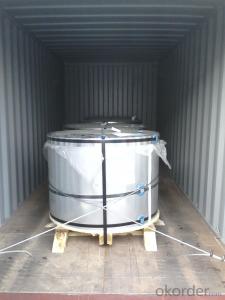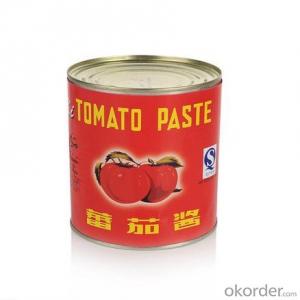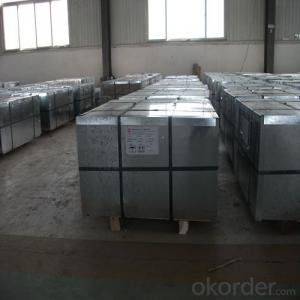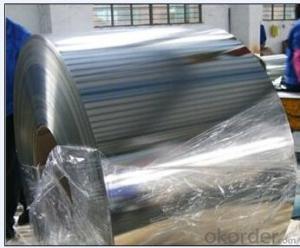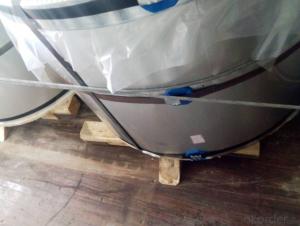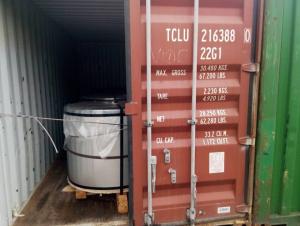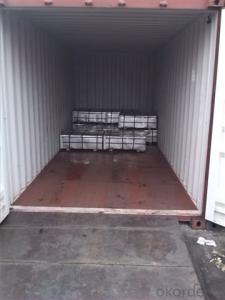Tinplate ETP for Milk Powder Cans with SPCC or MR Steel
- Loading Port:
- Qingdao
- Payment Terms:
- TT OR LC
- Min Order Qty:
- 25 m.t.
- Supply Capability:
- 30000 m.t./month
OKorder Service Pledge
OKorder Financial Service
You Might Also Like
1.Structure of Tinplate ETP for Milk Powder Cans with SPCC or MR Steel Description
Electrolytic Tinplate is a thin steel sheet coated by tin. It has an extremely beautiful metallic luster as well as excellent properties in corrosion resistance, solder ability, and weld ability.
2.Main Features of the Tinplate ETP for Milk Powder Cans with SPCC or MR Steel
Electrolytic Tinplate undoubtedly enjoys the pride of place as a packaging medium especially for food. It owes its unique position to its "nine layer sandwich structure", each of which contributes to its eminence as a packing material. The steel base of electrolytic tinplate provides the necessary strength and formability for can fabrication. The tin-iron alloy layer provides the bond between the steel and free tin layer. The free tin layer is not only responsible for the attractive bright finish and ease of solderability but is also non-toxic- a factor of vital importance in food packaging!
Tinplate is also widely used for making all types of containers such as food cans, beverage cans, and artistic cans, tea cans, painting cans, chemical package cans and dry food package cans, metal printing etc. Its applications are not limited to containers; recently, electrolytic tinplate has also been used for making electrical machinery parts and many other products.
3.Tinplate ETP for Milk Powder Cans with SPCC or MR Steel Images
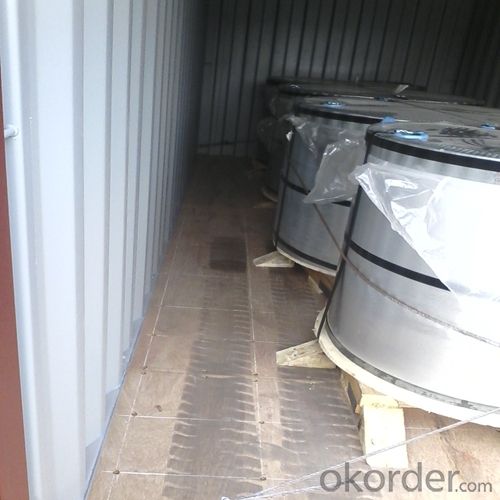
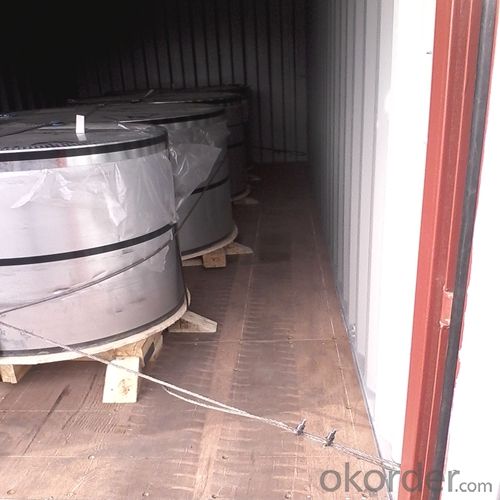
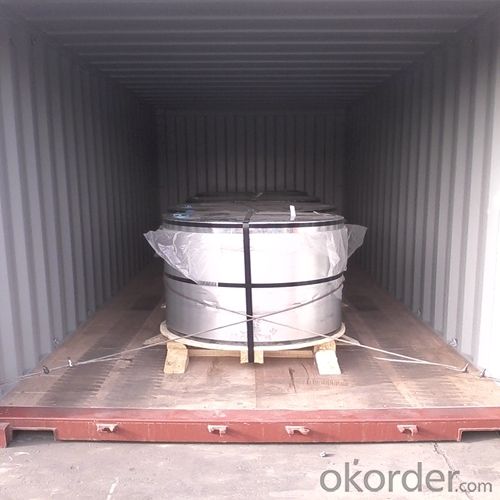
4.Tinplate ETP for Milk Powder Cans with SPCC or MR Steel Specification
Standard: ISO 11949 -1995
Material: SPCC
Thickness:0.175mm
Width: 600mm
Temper: T4
Annealing:CA
Coil Inner Diameter: 508mm
Weight: 6-10 tons/coil 1~1.7 tons/sheets bundle
Passivation:311
Oil: DOS
Surface: Finish
5.FAQ of Tinplate ETP for Milk Powder Cans with SPCC or MR Steel
1. What is the delivery time for your prime quality tinplate?
Usually 35 days after order confirmation.
2. What is your Minimum Order Quantity?
Usually MOQ is 50tons for one single size, for trial order, it can be 25 tons.
3. What is the payment term?
The most common we use is L/C at sight or TT. We can also try use other terms.
- Q: How can recycled tin cans be recycled?
- Longhu white tin cans crusher is a company based on years of manufacturing experience carefully developed recovery special grinder, the crusher machine advantages in traditional variety, make full use of impact, shear, impact each other, grinding theory carefully developed.
- Q: How does tinplate perform in high-temperature applications?
- Tinplate performs well in high-temperature applications due to its excellent heat resistance. It can withstand elevated temperatures without warping or deforming, making it suitable for various industrial and food processing operations that involve heat.
- Q: Cookies with tinplate packaging has what advantage?
- Good mechanical properties: tinplate cans relative to other containers, such as plastic, glass, paper containers and strength, and good rigidity, it is not easy to break. It is not only used for small sale packing, but also the main container for large transportation package.
- Q: What is the shelf life of tinplate?
- The shelf life of tinplate can vary depending on various factors such as storage conditions and the presence of any protective coatings. However, tinplate typically has a long shelf life, often lasting several years or more if stored properly in a cool, dry place.
- Q: Can tinplate be used for automotive parts?
- Yes, tinplate can be used for automotive parts. It is often used for components such as body panels, fuel tanks, and exhaust systems due to its corrosion resistance and durability.
- Q: What are the advantages of using tinplate for HVAC components?
- There are several advantages to using tinplate for HVAC components. Firstly, tinplate is highly resistant to corrosion, making it suitable for applications in humid environments or those involving exposure to moisture. Secondly, tinplate offers excellent heat resistance, ensuring the durability and longevity of HVAC components even under high temperatures. Additionally, tinplate is lightweight, making it easier to handle and install, while still maintaining its strength and structural integrity. Lastly, tinplate is a cost-effective option, providing a balance between performance and affordability for HVAC systems.
- Q: What are the typical transportation requirements for tinplate?
- The typical transportation requirements for tinplate include ensuring proper packaging and protection to prevent damage during handling and shipment. Tinplate is commonly transported in rolled or flat sheets, coils, or fabricated containers, depending on the specific product and its intended use. It is crucial to handle tinplate with care to avoid scratches, dents, or corrosion that could impact its quality. Additionally, proper labeling and documentation are necessary to comply with regulatory and customs requirements during transportation.
- Q: How is tinplate coated with organic materials?
- Tinplate is typically coated with organic materials through a process called lacquering or varnishing. The organic coating, usually a resin-based material, is applied to the tinplate surface in a controlled manner, forming a protective layer that prevents corrosion, enhances durability, and provides a decorative finish.
- Q: How does tinplate handle extreme weather conditions?
- Tinplate is known for its excellent resistance to extreme weather conditions. It is highly durable and can withstand harsh temperatures, humidity, and exposure to sunlight without significant degradation. Its protective coating prevents rusting and corrosion, making it a reliable choice for outdoor applications.
- Q: What are the advantages of using tinplate packaging?
- There are several advantages of using tinplate packaging. Firstly, tinplate is highly durable and provides excellent protection to the packaged goods, ensuring their safety during transportation and storage. Secondly, tinplate has a high resistance to corrosion, which helps to maintain the quality and freshness of the products for a longer period of time. Additionally, tinplate packaging is lightweight, which reduces transportation costs and makes it easier for consumers to handle. Moreover, tinplate is a sustainable and recyclable material, making it an environmentally friendly choice. Lastly, tinplate packaging is versatile and can be easily shaped, printed, and decorated, allowing for attractive and eye-catching designs, enhancing product visibility and brand appeal.
Send your message to us
Tinplate ETP for Milk Powder Cans with SPCC or MR Steel
- Loading Port:
- Qingdao
- Payment Terms:
- TT OR LC
- Min Order Qty:
- 25 m.t.
- Supply Capability:
- 30000 m.t./month
OKorder Service Pledge
OKorder Financial Service
Similar products
Hot products
Hot Searches
Related keywords
